Chandra means Moon, Namaskar means to salute or to honour, Chandra Namaskar is a Moon ritual where we worship and honour the Moon.
Whilst Chandra Namaskars have not been around as long as Surya Namaskars, the concept of looking to the Moon for rejuvenation is not new. Moon was regarded as a source of immortality in the Shiva Samhita, a 500+ year old Tantric Text.
Surya Namaskar heats our bodies giving us internal fire and passion, whereas Chandra Namaskar is a quieting sequence that provides a method of cooling the body, replenishing vital energy and helps channelize the Moon’s cool, relaxing, and creative qualities.
How and when to do Chandra Namaskar
There is more focus on slow, steady breathing when doing Chandra Namaskar, including puraka (inhalation), kumbhaka (retention) and rechaka (exhalation). It is important to move slowly, focusing on the flow and savouring the practice. The practice is literally all about chilling out!
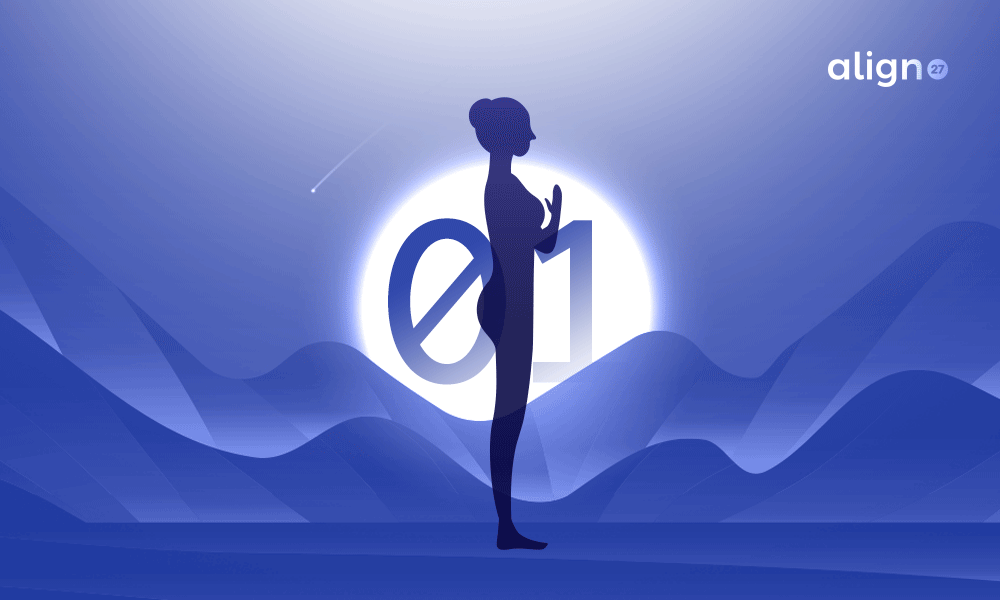
Chandra Namaskar stretches and strengthens the spine, legs, arms, back, and stomach and is best practiced in the evening on an empty stomach. Sunset is the optimum time, when the Moon is out to calm the mind, preparing our body for winding down for the evening. It is fine however to do it at any time of the day.
In addition to the time of the day, there are astrological moments in a month when you can practice since our energy is lower during these days and also to strengthen the Moon in our chart. For example:
- For a few days during the New Moon
- During the Full Moon
- When Moon transits the 8th house from your natal Moon
- When Moon transits over your natal Moon
- During the Waning Moon (the 14 day period after a Full Moon)
- For women it can be particularly effective to combat low energy during your menstrual cycle.
Start the practice with a feeling of grace and gratitude towards the energy of the Moon.

1: Pranamasana (Prayer pose) Stand at the edge of your mat, keep your feet together and balance your weight equally on both the feet. Expand your chest and relax your shoulders. As you breathe in, lift both arms up from the sides and as you exhale, bring your palms together in front of the chest in prayer position.
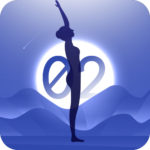
2: Hasta Uttanasana (Raised Arms pose) Breathing in, lift the arms up and back, keeping the biceps close to the ears. In this pose, the effort is to stretch the whole body up from the heels to the tips of the fingers. To deepen the stretch you can push the pelvis forward a little bit and reach up with your fingers rather than trying to bend backwards. Bring the palms together and salute the Moon.

3: Hasta Padasana (Hand to Foot pose) Breathing out, bend forward from the waist, keeping the spine erect. As you exhale completely, bring the hands down to the floor, beside the feet, bend the knees if necessary to bring the palms down to the floor.
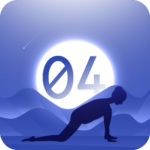
4: Ashwa Sanchalanasana (Equestrian pose) Breathing in, push your right leg back, as far back as possible. Bring the right knee to the floor and look up and ensure that the left foot is exactly in between the palms.

5. Ardha Chandrasana (Half Moon pose) Bring your hands together in prayer position in front of your chest. Inhale and raise your arms over your head, bend the upper torso back, keeping the palms together. The arms, back and the right leg should form a curve, like a half-moon. Breathe slowly.

6: Parvatasana (Mountain pose) Breathing out, bring the hands back to the mat and place them either side of the feet. Step the left leg back, keep the legs straight, feet hip width apart, lift the hips and the tail bone up, chest downwards in an ‘inverted V’ (/\) posture. Try to keep the heels on the ground and make a gentle effort to lift the tailbone up, going deeper into the stretch.
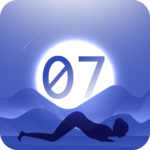
7: Ashtanga Namaskara (Salute With Eight Parts Or Points) Gently bring your knees down to the floor and exhale. Take the hips back slightly, slide forward, rest your chest and chin on the floor. Raise your posterior a little bit. The two hands, two feet, two knees, chest and chin (eight parts of the body touch the floor).
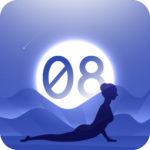
8: Bhujangasana (Cobra pose) Slide forward and raise the chest up into the Cobra posture. You may keep your elbows bent in this pose, the shoulders away from the ears. Look up. As you inhale, make a gentle effort to push the chest forward; as you exhale, make a gentle effort to push the navel down. Tuck the toes under. Ensure you’re stretching just as much as you can; do not force.

9: Parvatasana (Mountain pose) Breathing out, lift the hips and the tail bone up, chest downwards in an ‘inverted V’ (/\) posture. Try to keep the heels on the ground and make a gentle effort to lift the tailbone up, going deeper into the stretch.
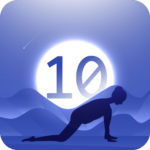
10: Ashwa Sanchalanasana (Equestrian pose) We will do the opposite side now, so breathing in, step your right leg forward, bring the left knee to the floor and look up and ensure that the left foot is exactly in between the palms.

11. Ardha chandrasana (Half Moon pose) Bring your hands together in prayer position in front of your chest. Inhale and raise your arms over your head, bend the upper torso back, keeping the palms together. The arms, back and the left leg should form a curve, like a half-moon. Breathe slowly.
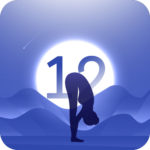
12: Hasta Padasana (Hand to Foot pose) Breathing out, bring the hands to the mat either side of your right foot and bring the left foot towards the front of the mat, bend forward from the waist, keeping the spine erect.

13: Hasta Uttanasana (Raised Arms pose) Breathing in, lift the arms up and back, keeping the biceps close to the ears. In this pose, the effort is to stretch the whole body up from the heels to the tips of the fingers. To deepen the stretch you can push the pelvis forward a little bit and reach up with your fingers rather than trying to bend backwards. Bring the palms together and salute the Moon.

14: Pranamasana (Prayer pose) As you exhale, first straighten the body, then bring the palms together in front of the chest in prayer position. Relax in this position, observe the sensations in your body.










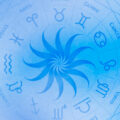












No Comments
Leave a comment Cancel